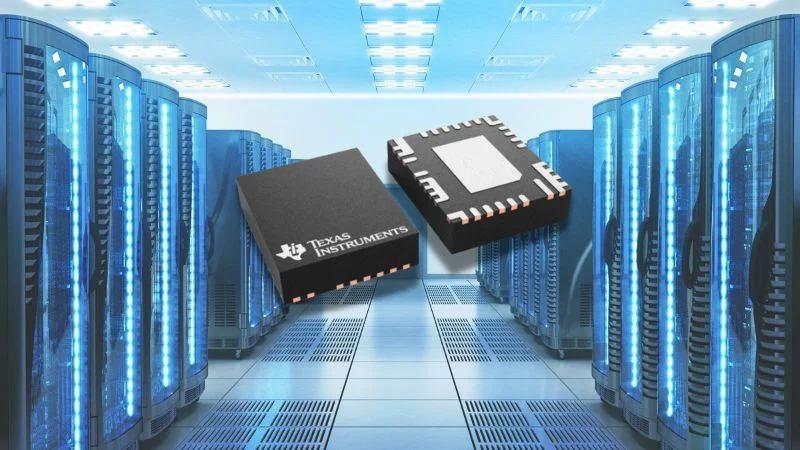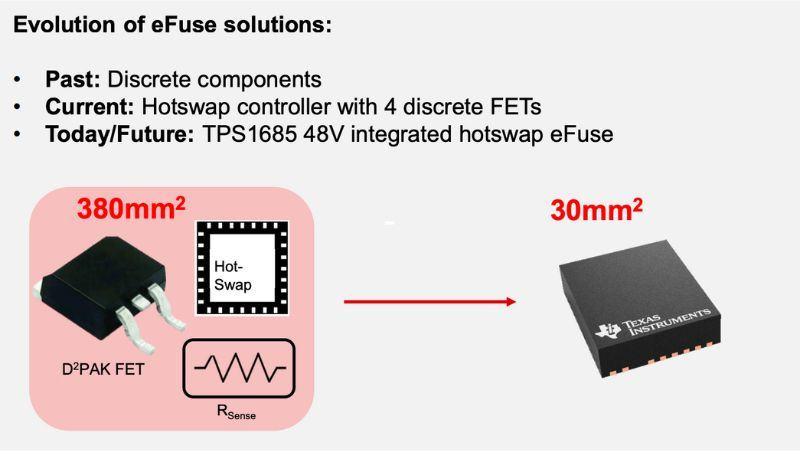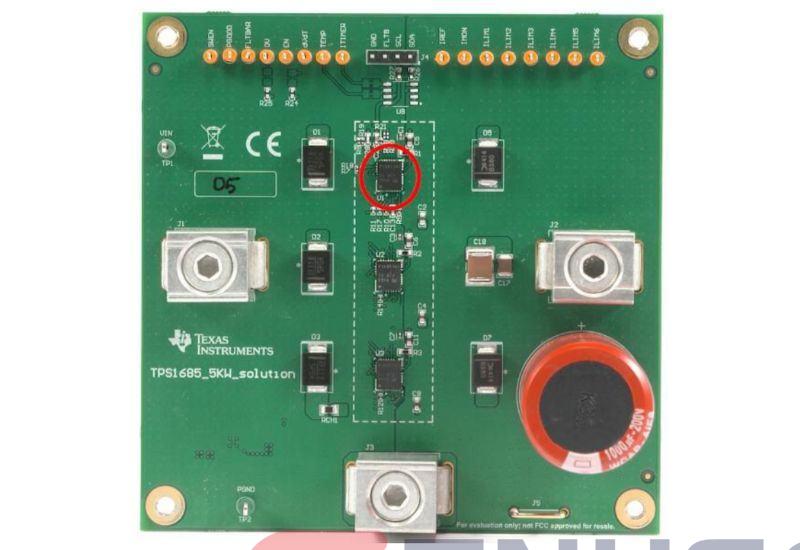TI Offers 48 V Power Management Chips for AI Data Center Design
AI-assisted searches require a tremendous amount of power, and data centers are straining to keep up with demand.
“Just as an example, if you do a quick search on Google for something … it takes around .3 Wh of energy,” said Robert Taylor, general manager of Texas Instruments’ Industrial Power Design Services. “If I do that same search with AI, whether it’s ChatGPT or DeepAI or any of the latest integrated AI searches, it takes 10 times the power.”
To handle the increased load, data centers are seeking more powerful, scalable components to simplify design.
Texas Instruments’ solution is the TPS1685, a power management chip that allows data centers to reach the higher power levels required for AI processing. It is the industry’s first 48 V integrated hot-swap eFuse with power-path protection. TI introduced the chips at APEC 2025 in Atlanta this week.

The 48 V integrated hot-swap eFuse for data centers. Adapted from images used courtesy of TI and Canva
Meeting Needs for Space Efficiency and Protection
TI designed the TS1685 with data centers’ growing needs in mind.
“As the power levels within the data center increase, the bus voltage also needs to increase,” Taylor explained in a briefing. “But we see a lot of our customers and data centers moving up to a 48-V architecture. The integrated solution we are proposing with (the TS1685) allows us to simplify the design.”
Previous hot-swap controllers integrated the amplifiers and some protection features but still had external components.
“In the past, we used a lot of discrete components,” Taylor said. “Maybe there’s an amplifier, a comparator, a sensing element, discrete FETs—all these different elements took up a lot of space on the PCB.”
The TS1685 allows data centers to scale beyond 6kW using an integrated chip that reduces the number of required components by 50%. It combines all components, including four discrete FETS, into a single package.

TI’s integrated hot-swap eFuse is just 30 mm2. Image used courtesy of TI
It also offers more intelligent protection features, enabling a fast and accurate response to faults. An integrated black box logs any faults so the user can identify and prevent similar occurrences in the future. A FET health monitoring device allows users to do predictive maintenance.
Another notable feature is the blanking timer, which allows time adjustments to avoid false tripping during peak inrushes. The blanking timer allows short transient overloads to pass through without triggering a circuit breaker. In data centers, the feature ensures that any temporary, high-amplitude load pulses caused by AI, GPUs, or other processor-intensive applications don’t disrupt the system. If overcurrent events are sustained, the eFuse will still shut down the circuit.
Scaling Up Beyond 6 kW
The TS1685 can be stacked to achieve current loads beyond 6 kW. TI’s power management chip addresses several challenges that eFuses experience with traditional parallel operation. These include mismatches in drain-to-source RDSon, PBC trace resistances, comparator thresholds, and uneven current sharing, which can cause premature or false tripping.

TI1685 placement. Image used courtesy of TI
Instead, the TS1685 uses interconnected IMON pins. One eFuse is designated as the primary controller to monitor the total system current, avoiding mismatch path resistances that cause inaccuracies. The system only trips when necessary.
An EVM EFuse evaluation board is also available. This device combines two TPS16850 eFuses connected in parallel, allowing the evaluation of a 54 V (typical) or 40 A (steady state) design. It supports a 2 kW input power path protection at a 48 V input voltage.
Meeting Future Efficiency and Power Needs
Data centers will continue to multiply and grow as AI becomes more integrated into nearly all industries. Components like the TS1685 can address the need to save space while meeting high power demands and maximizing efficiency.
“Power levels are increasing at a crazy amount,” Taylor said. ‘If you think about these data centers at the level of power that is needed to drive them, any sort of savings and increases in efficiency are welcome by data center owners.”
Sign up to our newsletter
Receive our latest updates about our products & promotions
